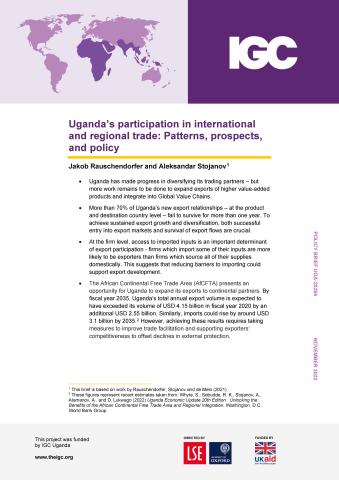Uganda's participation in international and regional trade: Patterns, prospects, and policy
-
Rauschendorfer and Stojanov Policy brief November 2022
PDF document • 520.98 KB
- Uganda has made progress in diversifying its trading partners – but more work remains to be done to expand exports of higher value-added products and integrate into Global Value Chains.
- More than 70% of Uganda’s new export relationships – at the product and destination country level – fail to survive for more than one year. To achieve sustained export growth and diversification, both successful entry into export markets and survival of export flows are crucial.
- At the firm level, access to imported inputs is an important determinant of export participation - firms which import some of their inputs are more likely to be exporters than firms which source all of their supplies domestically. This suggests that reducing barriers to importing could support export development.
- The African Continental Free Trade Area (AfCFTA) presents an opportunity for Uganda to expand its exports to continental partners. By fiscal year 2035, Uganda’s total annual export volume is expected to have exceeded its volume of USD 4.15 billion in fiscal year 2020 by an additional USD 2.55 billion. Similarly, imports could rise by around USD 3.1 billion by 2035. However, achieving these results requires taking measures to improve trade facilitation and supporting exporters’ competitiveness to offset declines in external protection.


